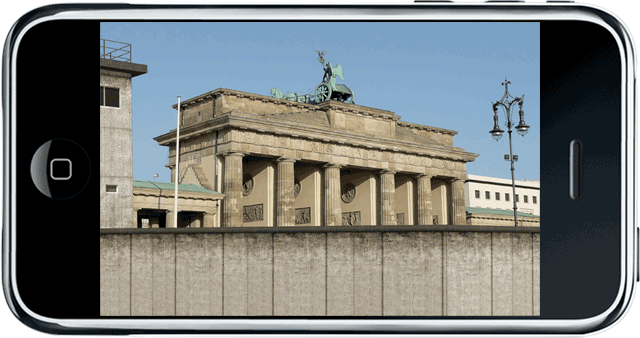 Title
TitleMobile Augmented Reality
The Big Idea
Augmented world within your smartphone
Target Member
Ranging from people of ages 13-44, this virtual world will focus on the capabilities of the consumer's mobile phone and GPS features as the outside environment will be fully utilized.
Value Proposition
My target member audience is interested in interaction with virtual objects and creation of "games or events" that other users can modify or create from their surroundings or in an open enviroment within certain spaces (e.g. level creation). Examples of this concept include LittleBigPlanet, ModNation Racers, etc.
World Design Feature Categories
a. Self - The user will be able to explore and interact with virtual objects not seen in physical space with the mediation of the smartphone camera.
b. Place - What's unique about this virtual world is that it can be brought anywhere from your mobile phone. The limitations of where objects can be interacted are limited to non-government or business spaces.
c.Purpose - It's purpose is to create an augmented world that people can interact with augmented objects or place virtual objects for aesthetics purposes, to make a statement, etc.
d.Fun Things To Do - Interaction will be an important factor in how the augmented world will be played. Level design within actual spaces will be an important factor in terms of how the world be interpreted and seen by the players/users. As I said before, concept of level designing comes from custom creation design from LittleBigPlanet, The Incredible Machine, ModNation Racers, Crazy Machines, etc.
From Crazy Machines
One example of creating and designing within an augmented space, with the right tools and object, one can replicate a level from Quake, a PC first person shooter game:
e.Society - Rules are very strict in terms of where one can place these virtual objects, design augmented spaces due to certain business and locations being restricted to the public, and the monopoly of owning certain locations is prohibited, which the creator of the designs will pay a fine if they do not remove their virtual objects in a certain amount of days.
World Design Plan
As said, world will be augmented within mobile devices, which all phones are required to as well as makes use of the following:
-Built-in camera
-Compass
-GPS
-Accelerometer
Interface Components
One example of how the interface would look like when interacting with other players who may be plugged in the virtual world or has the app installed in their smartphone. Trying to deviate away from the intention of the video's purpose to show augmented dating, the idea I am trying to visualize is that people who have a smartphone that has the app installed can be automatically detected, with a quick profile about the user.
In this video, the person interacting with the object is manipulating an object with the use of his special designed glove which has a special barcode that the HUD display detects, which if the virtual object is also touched, the object can be manipulated.
Interaction between the virtual objects in terms of moving, locating, and programming will be mediated with: [from left to right] a chorded keyboard, forearm keyboard, track-ball mouse, touch-pad mouse, and gyroscopic mouse.
An example of how users can implement their objects is a geo-based augmented reality content platform, which publishes your content within augmented reality, but not limited to Layar, Junaio, and Wikitude.
Out-World Components
An official forum can be created to share ideas, programming codes to make objects do certain things, as well as to create community and so on. Social networking is usually done via Facebook, Twitter, email notifications, etc.
Research
Links
Dr. Wayne Piekarski PhD Thesis - http://www.tinmith.net/wayne/thesis/
Second Life Forums - http://community.secondlife.com/t5/Forums/ct-p/Forums
Hoppala - http://www.hoppala-agency.com/
Layar - http://www.layar.com/
Videos





No comments:
Post a Comment